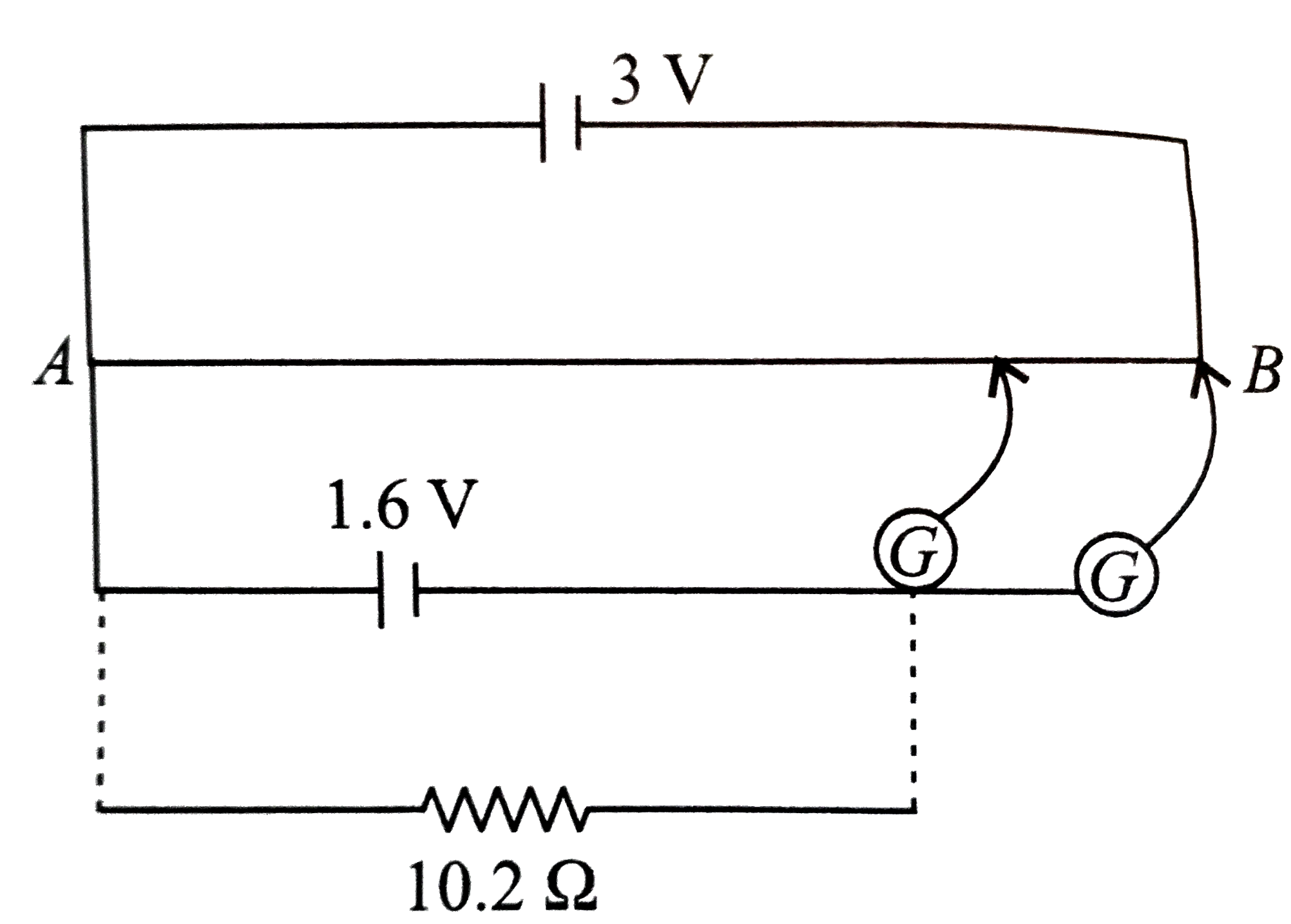A cell of itnernal resitance 1.5Ω and of e.m.f. 1.5 volt balances 500cm on a potentiomter wire. If a wirr of 15 Ω is connected between the balance point and the cell, then tha balance point will shift
To zero
By 500cm
By 750cm
None of these
The correct Answer is:D
(d) Balance point has some fixed position on potentiometer wire. It is not affect by the additions of resistance between balance point and cell.
Topper's Solved these Questions
- CURRENT ELECTRICITYBook:A2ZChapter:CURRENT ELECTRICITYExercise:Potentiometer And Meter Bridge
Explore 45 Videos
- CURRENT ELECTRICITYBook:A2ZChapter:CURRENT ELECTRICITYExercise:Heating Effect Of Current
Explore 40 Videos
- CURRENT ELECTRICITYBook:A2ZChapter:CURRENT ELECTRICITYExercise:R-C Circuits
Explore 17 Videos
- ATOMIC PHYSICSBook:A2ZChapter:ATOMIC PHYSICSExercise:Section D - Chapter End Test
Explore 30 Videos
- DUAL NATURE OF RADIATION AND MATTERBook:A2ZChapter:DUAL NATURE OF RADIATION AND MATTERExercise:Section D - Chapter End Test
Explore 30 Videos
Similar Questions
A cell of internal resistance of 1 ohm and emf 5 volts balances on a potentiometer wire at length of 2 meter. The driving battery has emf of 50 volts. If the cell is shunted by 1 ohm resistance wire then find by what amount balance point will shift?
View SolutionFig. shows a 2.0 V potentiometer used for the determination of internal resistance of a 1.5 V cell. The balance point of the cell in open circuit is 76.3 cm. When a resistor of 9.5Ω is used in the external circuit of the cell, the balance point shifts to 64.8 cm length of the potentiometer wire. Determine the internal resistance of the cell.

View Solution
Knowledge Check
A cell of internal resistance 5.1Ω and of e.m.f. 1.5 volt balances 500 cm on a potentiometer wire. If a wire of 15Ω is connected between the balance point and the cell, then the balance point will shift
ATo zeriBBy 500 cmCBy 750 cmDNone of the aboveThe balancing length on a potentiometer wire with a cell of emf 2V and internal resistance 1Ω connected in the secondary circuit with no load is 200cm. If a resistor of 19Ω is connected parallel to the cell, the balancing length
Adecreases by 10%Bdecreases by 20%Cdecreases by 5%Ddecreases by 10%In a potentiometer of ten wires each of 1m, the balance point is obtained on the sixth wire. To shift the balance point to eighth wire, we should
Aincreases the resistance in the primary circuitBdecrease the resistance in the secondary circuitCdecrease the resistance in series with the cell whose emf is to be determinedDincreases the resistance in series with the cell whose emf's is to be determined.
Figure 6.13 shows a 2.0V potentiometer used for the determination of internal resistance of a 1.5V cell. The balance point of the cell in open circuit is 76.3cm. Whan a resistor of 9.5Ω is used in the external circuit of the cell, the balance point shifts to 64.8cm, length of the potentiometer. Dentermine the internal resistance of the cell.

View SolutionThe e.m.f. of a standard cell balances across 150 cm length of a wire of potentiometer. When a resistance of 2Ω is connected as a shunt with the cell, the balance point is obtained at 100cm . The internal resistance of the cell is
View SolutionA 2.0 V potentiometer is used to determine the internal resistance of 1.5V cell. The balance point of the cell in the circuit is 75cm. When a resistor of 10Ω is connected across cel, the balance point sifts to 60cm. The internal resistance of the cell is
View SolutionIn a potentiometer of 5 wires, the balance point is obtained on the 3rd wire. To shift the balance point to the 4th wire,
View Solution3V poteniometer used for the determination of internal resistance of a 2.4V cell. The balanced point of the cell in open circuit is 75.8cm. When a resistor of 10.2Ω is used in the external circuit of the cell the balance point shifts to 68.3cm length of the potentiometer wire. The internal resistance of the cell is

View Solution

